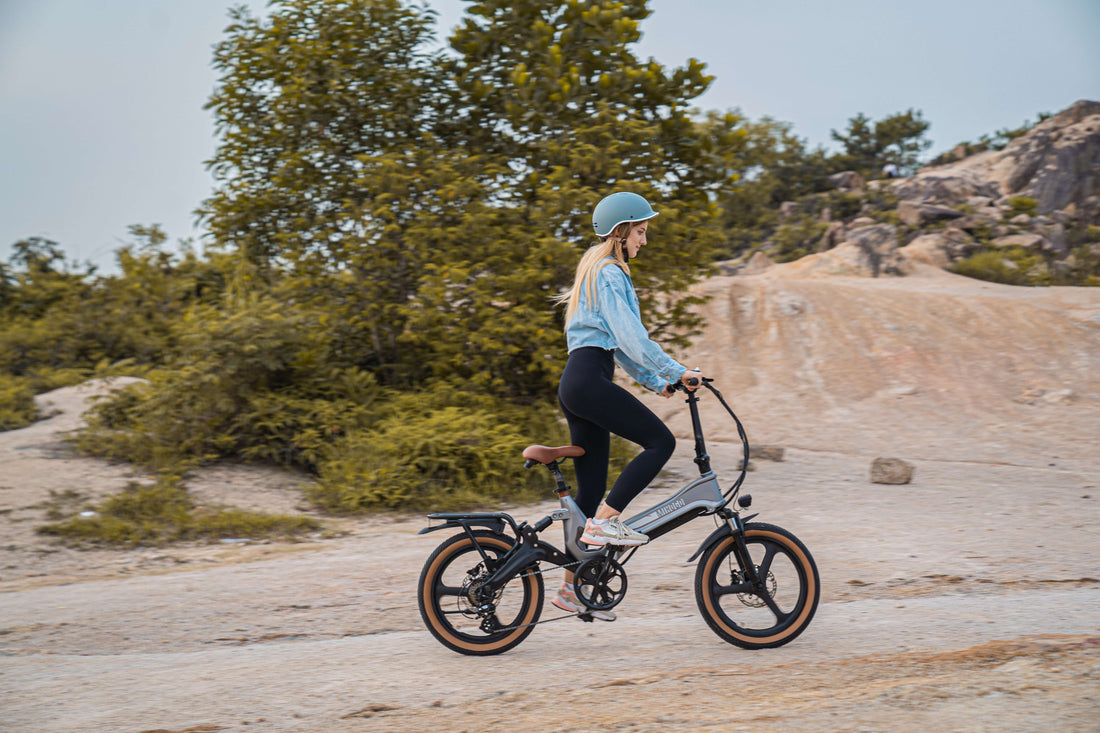Understanding High Altitude Challenges for E-Biking
Altitude sickness typically occurs only above 2,500 metres (8,000 ft), though some people are affected at lower altitudes, making proper preparation essential for mountain e-biking adventures. At an elevation of 2,770m (9,087ft) – France's Col d'Izoard – there is 73% of the oxygen available at sea level, significantly impacting your riding performance.
The reduced air density at high altitudes means your body must work harder to deliver oxygen to working muscles. High altitude cycling training becomes crucial as the same task (say, riding at 10 mph) will be performed at a higher percentage of VO2 max at altitude—meaning it will feel hardest the first day and gradually less hard the more you adjust.
Why Mihogo E-Bikes Excel at High Altitude
Powerful Motor Performance
Mihogo's robust motor systems provide the extra assistance needed when oxygen levels drop. The Mihogo ONE features a peak 1000W LONG-RANGE POLAR HIGH-POWER MAGNETIC MOTOR with 85 Newton-meters of torque, ensuring consistent power delivery even when your body struggles with altitude effects.
Extended Range for Mountain Adventures
High altitude riding demands exceptional battery capacity. The Mihogo One boasts the world's longest e-bike range, spanning up to an astonishing 270km/167miles with its dual battery system. This extended range proves invaluable when navigating mountain passes where charging opportunities are scarce.
Robust Construction for Mountain Terrain
The Mihogo NX delivers 20x4" tires engineered to navigate sand, snow, and the most rigorous trails with ease. Its dual suspension system, guaranteeing a smooth ride on any surface, becomes essential when fatigue from altitude affects your bike handling skills.
Essential High Altitude Adaptation Strategies
Gradual Acclimatisation Process
The best way to avoid altitude sickness is to make sure you ascend at a gradual pace to give your body a chance to acclimatise to the reduced oxygen levels. Plan multi-day ascents, spending nights at intermediate elevations before tackling major peaks.
Hydration and Nutrition Management
Mountain e-bike nutrition becomes critical at altitude. You should drink a minimum of four to six litres of fluid per day, even if you don't feel thirsty, as humidity is lower at higher altitude so sweat evaporates more quickly but it's not always noticeable.
Pre-Ride Preparation
Consult your physician about altitude medication before embarking on high-altitude e-biking adventures. The most commonly prescribed medication for high altitude is Acetazolamide (Diamox), though this should be discussed with medical professionals.
Mihogo Models for High Altitude Adventures
Mihogo ONE: The Ultimate Mountain Companion
Perfect for extended alpine tours, the Mihogo ONE's dual-arm torque sensors ensure that every ounce of power is channeled optimally from both left and right pedals, providing 23% boost in battery life compared to single torque sensor systems. This efficiency proves crucial when energy conservation matters most.
Mihogo NX: Conquering Extreme Terrain
For challenging mountain trails, the NX offers impressive front fork and rear shock work together to form a dual suspension system combined with Shimano 7S gear system enables effortless gear changes, while the dual hydraulic brakes provide reliable and efficient stopping power.
Mihogo LX: Long-Distance Mountain Touring
The LX 4.0 delivers 86 miles range per charge with its dual 48V 28.8Ah battery system packing 1.4kWh of energy, making it ideal for multi-day mountain expeditions where reliable range is essential.
Recognising and Managing Altitude Effects
Early Warning Signs
Acute Mountain Sickness (AME) is characterized by fatigue, headache, and dizziness. These symptoms typically appear within the first 24 hours at altitude and usually improve with acclimatisation.
When to Descend
However, HAPE, which includes fluid buildup in the lungs, can be life-threatening and requires immediate removal to lower elevation. Never ignore severe symptoms or difficulty breathing at rest.
Performance Expectations
You can ride into a high altitude event if you gradually increase the intensity of your efforts. Don't ride hard the first couple of days. Accept that you're going to have to accept significantly decreased capability when mountain biking at high altitude.
European High Altitude E-Biking Destinations
European mountain biking trails offer incredible opportunities for high-altitude adventures. Popular destinations include:
- Swiss Alps: Routes through passes like Col du Grand St-Bernard (2,469m)
- French Pyrenees: Challenging climbs to Col du Tourmalet (2,115m)
- Austrian Alps: Spectacular rides through Grossglockner High Alpine Road (2,504m)
- Italian Dolomites: Iconic passes like Passo dello Stelvio (2,757m)
Each destination requires careful planning and the right e-bike setup to ensure safe, enjoyable high-altitude riding experiences.
Safety Equipment and Technology
Modern Mihogo e-bikes come equipped with smart monitoring systems. The intelligent dashboard with a high-definition IPS display offers wide viewing angle for clear visuals and comprehensive system monitoring detects any vehicle system faults, providing crucial information when riding in remote mountain areas.
Conclusion: Elevate Your Mountain Adventures
High altitude e-biking with Mihogo opens unlimited possibilities for European mountain exploration. By understanding altitude effects, choosing the right equipment, and following proper acclimatisation protocols, you can safely enjoy Europe's most spectacular mountain destinations.
Remember that altitude adaptation is a gradual process requiring patience and preparation. With Mihogo's advanced e-bike technology supporting your mountain adventures, you're equipped to conquer new heights while staying safe and comfortable.
Ready to take your mountain biking to new elevations? Explore our complete range of high-performance e-bikes designed for European mountain adventures.
For comprehensive information about cycling at high elevations, consult resources like Bicycling Magazine's altitude guide and always seek medical advice before attempting high-altitude activities.






